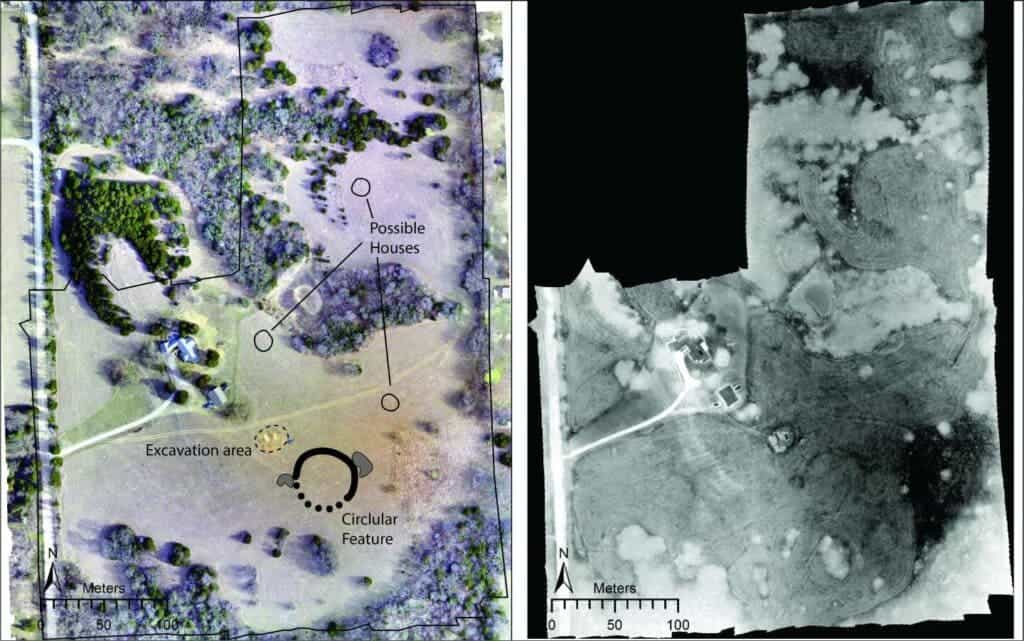Findings like this are pretty rare, but a new surveying method could reveal many similar ancestral American structures.

Temperature can tell you many things. It can tell you if someone has a fever or not, if the food is cooking properly — or if there may be archaeological structures under the soil. Physical properties have been used by archaeologists for a number of years, but drone-based thermal surveys are a relatively new (and very useful) addition in the modern archaeologists’ arsenal.
The basic phenomenon is fairly straightforward. Things get cold in the day and hot in the night, but different things heat and cool differently. A ditch or an archaeological structure might behave very differently compared to the surrounding soil. If you have a drone’s birds’ eye thermal view, you can survey a great area with relative ease and see buried features that aren’t visible on the surface.
This is exactly what happened in Wichita, Kansas. Using this technique, a team of researchers have found what they believe to be a part of Etzanoa, a famous Wichita ancestral city. Etzanoa may have housed 20,000 Wichita people, flourishing until the 1700s.
“Our findings demonstrate that undiscovered monumental earthworks may still exist in the Great Plains. You just need a different archeological approach to recognize them,” explained lead author, Jesse J. Casana, a professor and chair of the department of anthropology at Dartmouth. “Our results are promising in suggesting that there may be many other impressive archaeological features that have not yet been documented if we look hard enough,” he added.
There were no visible marks on the surface, but researchers suspected something could be there based on other findings in the area. Specifically, the 18-hectare drone survey revealed a circular shaped ditch measuring 50 meters wide and approximately 2 meters thick that has been infilled. Casana believes this to be the remains of a so-called council circle, similar to several others found in the area. The site suggests a sprawling yet unitary Wichita city.
However, it’s not entirely clear what council circles were used for. Some archaeologists speculated they were ceremonial or political in nature, reserved for important tribal discussions. However, they might have also been built for astronomical or even defense purposes, Casana adds.
He and his colleagues now plan to scan the surrounding area and look for other similar buried structures.
“While we may never know what the council circles were used for or their significance, new archaeological methods allow us to see that people made these earthworks.”
Journal Reference: Jesse Casana et al, A Council Circle at Etzanoa? Multi-sensor Drone Survey at an Ancestral Wichita Settlement in Southeastern Kansas, American Antiquity (2020). DOI: 10.1017/aaq.2020.49









